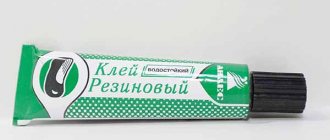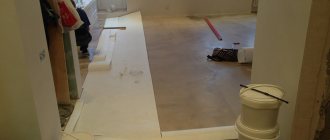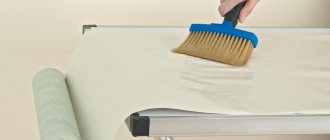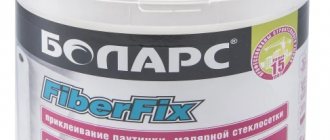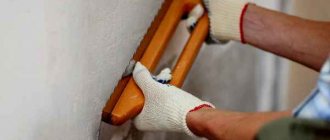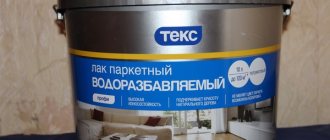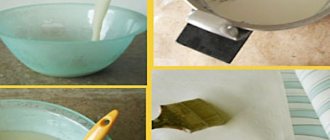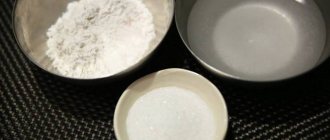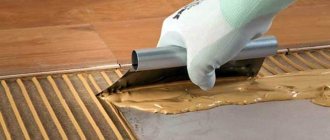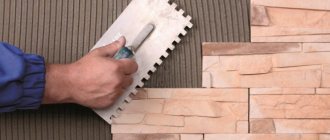Acrylic adhesives
These types of adhesives are divided into anaerobic and cyanoacrylate. Depending on the active ingredients included in the composition, the products differ in their characteristics.
What is the difference, read on.
Anaerobic acrylic adhesives
Anaerobic adhesives are liquid compositions of acrylic adhesives that can remain in their original state when exposed to atmospheric oxygen (stored in an oxygen-permeable container) and quickly harden when contact with oxygen is lost.
Main properties of anaerobic adhesives:
- viscosity 1-400 Pa*s, providing high penetrating ability;
- the ability to use glue in the narrowest metal gaps;
- curing time from 15 to 30 minutes. at t 100°C;
- operating t intervals: -253 +150°С (long-term), up to 300°С (short-term).
Anaerobic adhesives fill all irregularities and gaps on the metal surfaces being bonded, forming an absolutely sealed, monolithic seam. No tension is created at the connection points. An important quality of anaerobic adhesive compositions is the protection of the surfaces of metal elements from corrosion.
Application
Areas of application of anaerobic adhesives:
- sealing and locking of threaded connections;
- fixation of sliding joints;
- sealing flange connections;
- elimination of sieve porosity of casting;
- sealing welds and pressed parts.
Anaerobic acrylic glue.
When using anaerobic adhesives, the resulting joint is not subject to torsional shifts, is not afraid of climate change, exposure to aggressive substances, such as acids and alkalis, fuels and lubricants, high temperatures and pressure. Thanks to these properties, anaerobic glue is indispensable in metallurgy and construction.
Cyanoacrylate adhesives
Cyanoacrylate adhesives are well-known products manufactured under the trademarks “Superglue”, “Secunda”, etc. They are called cyanoacrylate adhesives due to the main active ingredient - cyanoacrylic acid esters.
The viscosity of the glue and ease of use are ensured by the pyrogenic silicon dioxide included in its composition.
This type of glue was invented during World War II during an experimental search for an adhesive material for repairing weapon elements such as optical sights.
Cyanoacrylate adhesives.
Cyanoacrylate adhesives are very popular in everyday life, but when using them, safety precautions must be observed for a number of important reasons:
- cyanoacrylate monomers are toxic, so it is necessary to glue in a ventilated area;
- t flash of adhesive composition - + 79°C. To avoid burns, do not use glue near an open flame;
- Given the high adhesion to human skin, you need to wear protective gloves when working with cyanoacrylate adhesives.
One of the properties of cyanoacrylate adhesives is their high sensitivity to moisture and rapid polymerization in a humid environment. This means that the glue sets already at natural air humidity.
Application
Cyanoacrylate glue can be used to join a wide variety of materials:
- rubber;
- plastic;
- wood;
- glass;
- metal, including galvanized.
The time for complete hardening of the glued joint is 24 hours at +20°C and air humidity of 55% and above.
Cyanoacrylate adhesives have different operating temperature ranges. Normal from -60 to +70-80°C. For products modified with additives, the range increases: from -196 to 125 °C and from -60 to 300 °C. In the second case, for a short time.
Weaknesses of cyanoacrylate adhesives: low resistance to moisture, frost, shock loads, fragility. The composition is unstable during storage. It is not recommended to glue products made of fluoroplastic and polyethylene with cyanoacrylate adhesives.
Glue composition
05/14/2018 Don’t know how to choose glue and what to focus on? Tired of the cliched words “quick coupling”\“long wear”\“the most liquid”, etc.? We will tell you what is contained in the glue and how these components affect its characteristics! Choosing glue is difficult without specific indicators, so we will tell you about the 2 main components of eyelash extension glue and tell you what they affect. Having received such knowledge, you will be able to decide on a purchase much easier!
Polymethyl methacrylate (PMMA) is a component that affects the density and speed of adhesion, and, to a lesser extent, evaporation. The more of this component, the thicker and slower the glue itself. Rating: 1. SHINE Fun Banana and Fun Cherry glues contain only 5% PMMA (this glue is NEW GENERATION) 2. SHINE Strong glue contains 6.9% PMMA3. Adhesives Fast, Maximum, Bright blue, Bright aquamarine - 9.9%
Total: The fastest, with less evaporation, liquid glue in the SHINE-SHINE FUN banana line (adhesion 0.2-0.5 seconds).
Our best-selling glue SHINE Strong has adhesion = 0.5 seconds.
Fast, Maximum, Bright blue, Bright aquamarine adhesives are slightly thicker, and a little slower - 0.5-1 seconds.
! There is no need to buy the fastest glue if it doesn't suit you. This is especially true for beginners. You shouldn’t immediately take SHINE Fun or Strong glue, because you simply may not keep up with them and the work will be ruined.
If your room is hot or you like to straighten the eyelash after application, then choose glue that has a higher PMMA content. Fast, Maximum, Bright blue, Bright aquamarine adhesives are also quite fast.
The next main component of any glue is ethyl cyanoacryate.
It affects the strength of adhesion (wear also depends on it) and the intensity of evaporation. The more of this component in the glue, the stronger the adhesion, wear and evaporation.
!
Pay attention! Fast bonding adhesives often have higher evaporation rates than slower adhesives. But there are exceptions.⠀We have already said that SHINE FUN glue is unique. It has both fast, strong adhesion and moderate, even pleasant-smelling fumes. It is precisely due to these properties + the presence of a convenient ball inside that explains its high cost in comparison with conventional adhesives.
Ethyl cyanacryate content in SHINE glue: 1. FUN -95% 2. Strong 88% 3. Fast, Maximum 85% 4. Bright blue Bright Aquamarine 70%
Based on this data, keep in mind that if you are afraid of strong fumes, then SHINE Bright blue and Bright Aquamarine adhesives are safer, while SHINE Strong is more aggressive, but has a stronger adhesion.
It’s worth saying right away that there is no absolutely safe glue. Based on the properties of the glue, there are no fast adhesives with instant adhesion and long wear that do not have fumes on the market. This is why it is so important not to neglect protection against fumes: use respirators with a filter, fume neutralizers or an exhaust hood, which guarantees 99.9% health preservation.
There are adhesives with a reduced content of ethyl cyanoacrylate, as we discussed above.
However, it is worth mentioning one more component - Alkoxy-2-cyanoacrylate
(Alkoxy-2-Cyanoacrylate), which has no toxic fumes.
This component is contained in SHINE Bright blue and Bright Aquamarine
together with reduced ethyl cyanoacrylate content. Therefore, these two adhesives not only have good properties, but also a more gentle composition.
A table so that you can easily navigate SHINE glue - save it for yourself!
Conclusion: make your choice based on specific values and pay attention to the composition!
Choose your glue!
Rubber adhesives (on rubbers)
The main active ingredients of rubber adhesives are natural or synthetic rubbers. Hence they received their second name - rubber adhesives.
After curing, rubber adhesives remain elastic, so they are often used for gluing rubber and other elastic materials and products. The type of rubber included in the composition and the vulcanization system affect the strength of the adhesive joint.
Table 1: Properties of rubbers used as a base for rubber adhesives
| Rubber | Conditional tensile strength, MPa | Operating temperature range, 0C | Weather resistance | Special properties |
| Natural | 7,0-28,0 | -54…+82 | Bad | Wear-resistant |
| Divinylstyrene | 1,4-24,5 | -51…+82 | Satisfactory | High water resistance |
| Isoprene | 17,5-28,0 | -54…+82 | » | — |
| Chloroprene | 21,0 | -40…+116 | Excellent | — |
| Divinylnitrile | 24,5-28,0 | -51…+149 | Satisfactory | — |
| Butyl rubber | 17,5-21,0 | -45…+149 | good | High damping properties |
| Ethylene-propylene | 24,5 | -51…+177 | Excellent | — |
| Chlorosulfonated polyethylene | 10,5-17,5 | -40…+163 | » | High oxidation resistance |
| Acrylate | 14,0-17,5 | -29…+177 | Satisfactory | Resistance to cracking |
| Organosilicon | 4,2-9,1 | -118…+315 | Excellent | Same |
| Urethane | 70,0 | -54…+116 | good | Resistant to abrasive wear |
| Fluorine rubber | 10,5-21,0 | -23…+260 | » | Resistant in aggressive environments |
| Epichlorohydrin | 14,0-21,0 | -62…+149 | Satisfactory | — |
| Fluorosiloxane | 8,4 | -68…+204 | Excellent | Resistant in aggressive environments |
| Propylene oxide | 7,0 | -62…+149 | » | — |
| Polysulfide | 1,7-7,0 | -54…+121 | good | — |
All commercially available rubber adhesives form two large groups.
1. The first is non-vulcanizing adhesives based on rubber (usually natural), which harden after the solvent evaporates. These are mostly single-pack formulations.
2. The second is self-vulcanizing adhesives. Before use, mix the rubber solution and the vulcanizing system. Use immediately. They come in single and double packs.
Application
Rubber adhesives are used to join products made of different materials, one of which must be elastic, for example:
- rubber and rubber compounds;
- rubber with glass, metal;
- rubber with ceramics, composites, plastics.
Dispersion and other types of adhesives that contain rubber as additives (stabilizers, viscosity or elasticity enhancers) do not belong to rubber adhesives. Water-based dispersion adhesives are used for joining porous materials, such as fabrics, cardboard, leather, etc.
Review of recommended brands
You cannot buy paper glue without knowing its properties. Experts recommend choosing certain brands that will allow you to perform office work efficiently.
Universal PVA glue OLECOLOR
Universal PVA has the best adhesive properties. It is used not only for domestic purposes, but also for repairs. The composition dries in 1 hour if you glue paper and cardboard. At the same time, it retains its durability at room temperature and humidity of 60%.
"Component Urethane 500"
Polyurethane glue is preferred when the strength of products made from:
- cardboard;
- wood materials;
- PVC;
- expanded polystyrene.
The product does not contain water or organic solvents. The viscosity of the glue is average, and the seam after application is quite rigid.
"Moment Crystal"
The advantage of this brand of glue is that it is easy to work with. At the same time, he firmly connects thick sheets of paper and cardboard. It is used to repair ceramic, glass, and wood products. The product remains transparent after use and is resistant to moisture and temperature changes.
"Ergomelt"
It is convenient to use a glue gun to create crafts. Special rods are intended for the tool. They heat up and glue the parts of the craft firmly and securely. Ergomelt is often used when working with corrugated paper and cardboard. A thin layer of the substance is enough to firmly connect the parts.
KRYLON EASY-TACK
Velcro adhesive is suitable for reusable use. They are good for joining thin types of paper. The product dries quickly and has no pungent odor. It's easy to use.
Art-Potch Pecoupaqe HobbyLine
The decoupage technique is very popular among adults and children. Often you have to decorate plates, glasses, vases with patterns from napkins. And here you can’t do without a special glossy water-based glue. It is purchased when working with thin types of paper.
Adhesives based on urea-formaldehyde resins
In the process of polycondensation of urea with formaldehyde, urea-formaldehyde resins are formed, on the basis of which adhesives are made.
Curing occurs with heating and room temperature with the participation of catalysts - acids such as sulfonaphthenic, oxalic, hydrochloric.
Adhesives based on urea-formaldehyde resins.
The positive properties of urea-formaldehyde adhesives include:
- transparency;
- light resistance;
- high curing speed;
- less toxic compared to phenol-formaldehyde adhesives.
The disadvantages of the product are low elasticity, poor resistance to moisture, low strength of the adhesive connection, shrinkage and, as a result, internal stress and cracking.
Application
Despite the disadvantages, urea-formaldehyde adhesives are actively used in the production of laminates, as well as for the manufacture and gluing of wood and wood-based products, such as chipboard.
Latex-based adhesives
Adhesives based on natural and synthetic latexes are widespread and popular due to the absence of organic solvents in their composition. These are water-based dispersion compositions, low flammability, less toxic and inexpensive.
Along with the advantages, latex-based adhesives have disadvantages:
- low resistance to frost and moisture;
- poor metal protection and risk of corrosion;
- poor wettability of bonded surfaces;
- low stickiness;
- foaming during production.
The operating temperature range of different latex-based adhesives depends on the nature of the rubber included in the composition.
Table 2: Influence of the nature of latex rubber on the operating temperature range
| Latex rubber | Operating temperature range, °C |
| Natural | -50…+100 |
| Chloroprene | -50…+70 |
| -50…+100-150 | |
| Butadiene-styrene | -5…+70-90 |
| PVA | -5…+100 |
Application
Adhesives based on SKS (styrene-butadiene rubber) are indispensable in the construction industry. These are elastic putties, compositions for leveling surfaces, as well as various adhesive mastics for interior work.
Adhesives based on chloroprene polymer are almost universal and are used for gluing a variety of materials:
- leather with rubber;
- cladding with wood;
- steel with fabric and paper;
- plastic and wooden elements, cotton fabrics, polystyrene foam.
Chloroprene glue.
Adhesive compositions based on natural latex have a similar scope of application to chloroprene ones. This is, first of all, the manufacture and repair of shoes. They are used in construction when covering concrete, wood and plaster surfaces with ceramic tiles. Textile conveyor belts are also glued together with adhesives based on natural latex.
Adhesive based on natural latex.
Viscosity
The viscosity of a fluid determines the fluid's resistance to flow. This is the most difficult parameter to measure. PVA-based adhesive materials are pseudoplastic liquids, which means that they change their viscosity depending on the flow speed (they liquefy under mechanical action - stirring). This dependence is different for different adhesives. In addition, the viscosity of liquids depends on temperature. It is customary to divide liquid adhesive materials into three groups: low-viscosity - adhesives with a viscosity of less than 3000 mPa*s - can be applied with spray guns; medium-viscosity - glue with a viscosity of 5000-20000 mPa*s - applied with a brush, roller, or roller glue-applying equipment; high-viscosity - glue with a viscosity of more than 25,000-30,000 mPa*s - applied using spatulas and squeegees.
Depending on the material used and the gluing method, adhesives of different viscosities are used (high-viscosity adhesives are used for porous wood). Less viscous ones are recommended for gluing along the face and end gluing in the manufacture of furniture panels, as well as for machine application in the manufacture of tenons and micro tenons.
Adhesives based on polyvinyl acetate (PVA)
An ester of polyvinyl alcohol and acetic acid, better known as polyvinyl acetate or PVA, is a solid or viscous substance with a density of 1180-1190 kg/m3. At t +120°C, plastic flow of the polymer occurs; above +130°C, PVA decomposes. Therefore, products based on it are used at temperatures up to +100°C.
In the production of glue, PVA water emulsions are mainly used. However, mixtures with organic solvents can be used. For example, a polymer solution with vinyl acetate ester or derivatives of partial polymerization of the product.
Application
The area of application of PVA glue is quite extensive.
1. The well-known form of release is PVA-K . It looks like a viscous white or yellowish liquid. Used for gluing cardboard and various types of paper.
2. Universal glue PVA-MB . They can be used to glue wooden, paper, and cardboard elements to surfaces made of wood, glass and metal. PVA-MB glue can be used as part of primers and putties.
3. PVA wallpaper glue , as the name implies, is used for repair work using paper wallpaper. The composition is a white or creamy mass of uniform consistency.
4. PVA super glue is produced under the abbreviation PVA-M.
Having a higher adhesive ability, it is used to join together products made of wood, glass, leather, textiles, and ceramics. They can be used to glue tiles and linoleum. In appearance it is a white or slightly yellowish homogeneous mass.
Chemical composition of popular types of glue
The presence of one or another component in the glue may cause the product to gain or lose certain qualities. This is important to remember when choosing an adhesive product for specific surfaces. If you make the wrong choice, you will not get a reliable, tight and durable connection, since the chemical composition of the product will not be able to provide the future connection with relevant qualities.
Let us briefly describe the main components of different types of glue:
- The chemical composition of polyurethane glue is as follows. The main components of such products are aromatic or aliphatic isocyanates and hydroxyl-containing oligomers. In addition, in the chemical composition of polyurethane glue you can find a hardening initiator (water, alcohol) in a small amount and a filler (for example, titanium dioxide. To make the components better compatible with each other, the composition of the polyurethane product may also contain substances that regulate its viscosity: solvent, synthetic resins or surfactants.
- The chemical composition of PVA glue is as follows. The product is 95% made on the basis of polyvinyl acetate. This component can be obtained from vinalon, a synthetic substance based on polyvinyl alcohol. Depending on the area in which PVA is used, a plasticizer may also be found in its dispersion. This PVA component makes up 1.5-5% of the total mass of the glue and provides the connection with high ductility, resistance to low temperatures, and durability;
- The chemical composition of Titan glue is simple. The Titan product is created on the basis of vinyl acetate copolymers in an organic solvent.
The chemical composition of tile adhesive is as follows: the main binding component, cement, is mixed with sand and plasticizers. Sand in the tile composition is responsible for the strength of the joints, and plasticizers give the seams between the tiles high plasticity.
Phenol-formaldehyde adhesives
Solutions of synthetic unmodified phenol-formaldehyde resins in acetone, alcohol or water are used as adhesives.
Some fibrous materials hydrolyzed with an alcohol solution of phenolic resins also have adhesive properties. For example, paper made from kraft pulp.
Unlike urea-formaldehyde adhesives, products based on phenol and formaldehyde are more moisture resistant, but also more toxic. The glue is obtained by mixing the components immediately before use.
Application
Phenol-formaldehyde adhesive can be used for gluing wood, sheet and tile materials based on it - plywood and chipboard, as well as foam plastics.
Adhesives based on organoelement compounds
Adhesive compositions based on organoelement compounds have the following properties:
- moisture resistance and low hygroscopicity;
- resistance to UV, ozone, biological factors;
- thermal and oxidative stability.
The operating temperature range of adhesives based on organoelement compounds is from -60 to +1200°C.
In particular, silicone adhesive is a poor conductor of electricity and remains stable when in contact with many chemicals, with the exception of organic solvents.
Application
Adhesives based on organoelement compounds have found application in gluing silicone rubber and heat-resistant materials (except metal).
Yacht glue
Yacht adhesives must have high levels of resistance to water. Among the variety of options, “PU Max” stands out, which is chosen by many yacht and boat owners. It creates a reliable layer and sets in a short time, you need to wait 60 minutes. The glued object can be used immediately; the layer is not affected by sea water.
It creates a reliable layer and sets in a short time, you need to wait 60 minutes.
Adhesives based on thermoplastic polymers
Adhesives based on thermoplastic polymers (thermoplastics) lose their properties at elevated temperatures, that is, they have low heat resistance. However, this disadvantage is compensated to some extent by the good elasticity of the products.
Thermoplastic-based adhesives include compositions with the following polymers:
- ethylene;
- carbinol;
- polyheteroarylenes;
- polyamides;
- derivatives of acrylic and methacrylic acids;
- rubber-like materials.
This type of glue is used in hot glue guns.
Application
Adhesives based on thermoplastic polymers are more often used for gluing materials where heat resistance and tensile strength are not priority requirements for the quality of the adhesive joint.
However, there are exceptions. These are the following adhesive systems:
- universal carbinol glue;
- polyacrylic adhesives;
- elastomer-based adhesive;
- MPF-1.
Adhesives can be used to join metal parts and elements, as well as metals with other materials, such as plastics or rubbers.
What it is?
Glue (go to products) is a multicomponent substance that can connect materials. The first types of adhesives, which appeared in Neolithic times, were made by boiling down all kinds of raw materials. For these purposes, the tribes boiled bones, scales, horns and hooves, and used resins of plant origin. The composition of primitive adhesives strongly depended on the place of residence of a person, climate, flora and fauna.
Residues of adhesives were found in the tomb of Tutankhamun, and they are regularly discovered at excavation sites. Asphalt, one of the oldest adhesives, was used to glue objects together, seal jugs of wine, and lubricate the bottoms of ships. Gypsum (go to products), concrete and other building materials (go to products) were also used as glue to build towers and houses.
In other words, glue is an ancient finishing material, and it is still one of those substances that people use almost every day, even if they themselves do not notice it.
Inorganic adhesives
A distinctive feature of inorganic adhesives is their unsurpassed heat resistance. Most adhesives do not lose their properties at extremely high temperatures, up to + 3000°C.
When heated, inorganic adhesives do not lose their insulating properties; when used in a vacuum, they do not emit gases.
However, taking into account not the best strength characteristics (3-5 MPa), as well as relative fragility, they are not used as structural compositions.
It is worth considering that these are predominantly acidic or alkaline compounds, so they are not suitable for gluing some materials.
There are several groups of inorganic adhesives:
- metal;
- phosphate adhesives-cements;
- sodium silicate based adhesives;
Metal adhesives
Adhesive compositions containing various metals are called metal adhesives. They have a paste-like consistency, and the soft, light metal gallium is always used as the main component. Hence the second name - gallium pastes.
Application
Due to the good wetting and penetrating ability of gallium, metal adhesives are used to join metal products and other materials. The operating temperature range is from 20 to 300°C. This depends on the ability of refractory metals to dissolve in gallium.
Silver differs from other metals in having better solubility in gallium. However, the most common fillers for gallium pastes are powders of metals of the copper subgroup.
Examples of application of metal adhesives:
- bonding of semiconductor devices;
- production of piezoceramic sensors;
- connection of flanges and pipes made of different metals.
The successful use of gallium pastes in industry is due to their ability to expand in volume when cured. Due to the formation of internal pressure in the elements being glued, the adhesive joint is compacted and strengthened.
Phosphate adhesives-cements
Adhesive compositions based on phosphoric acid are called phosphate adhesive cements. Compositions based on solutions of phosphoric acids and their salts are commonly called adhesives.
Phosphate adhesive cements are thick, paste-like compounds of green color. At a temperature of +20°C they harden. If high water resistance is required for the adhesive joint, heat treatment must be carried out at a temperature of 270 to 300°C.
Application
The scope of application of phosphate adhesives-cements is quite wide. Compositions based on AChPS (aluminum chrome phosphate binders) can be used to glue ceramics, fix high-temperature sensors, and use them for locking threaded connections.
Adhesive compositions based on ACFS and zirconium dioxide have high thermal resistance (1500-2000°C).
Considering that phosphate adhesive cements are acidic, they are successfully used when working with materials that are resistant to corrosion.
Sodium silicate based adhesives
An aqueous alkaline solution of sodium silicate is called liquid glass. It is a colorless, viscous product with good adhesive properties and cures at room temperature.
Sodium silicate-based adhesives form a film on the bonded surfaces, which has two disadvantages - fragility and poor water resistance. To increase resistance to moisture, the gluing area is subjected to heat treatment at 100°C or the composition is modified with aluminum compounds.
In general, liquid glass has increased heat resistance; adhesive joints do not lose their properties when heated to 1100-1200°C. Another positive quality of sodium silicate is its resistance to biological corrosion.
Application
As an independent adhesive, liquid glass is used for gluing wood, paper, and cardboard. Sodium silicate-based adhesives with modifiers form stronger connections, so they are used in plumbing repairs (sealing cracks), as well as, for example, for gluing asbestos and other insulation.
Best choice for decoration
A large selection of materials for decorative techniques allows everyone to find something to their liking
And here it is important to decide on the glue to create unique crafts, nice things for the whole family
Glossy Accent by Range
Many people use non-toxic and transparent glue when working with various materials: paper, cardboard, glass, acrylic. It is convenient to use the composition by gluing voluminous decorations in the form of buttons, beads, and artificial flowers onto products.
Universal polymer
The main advantage of a polymer adhesive composition is that it can glue any surface. Even by thinly applying the product, you can achieve the strength of the resulting product.
Professional binding
An aqueous dispersion agent is produced. The glue is based on synthetic white resins. Glue intended for bookbinding. It is used in decorative crafts, gluing paper, cardboard, glass, and plastic. If you dilute the product in water (30 grams of glue per 10 grams of water), then it can be used in the decoupage technique.
Typographic
Bookbinding glue is sold in powder form. It is diluted with water and used for:
- gluing book spines;
- creating notebooks, brochures;
- book binding.
The adhesive solution is used in scrapbooking and applique. It has high adhesive ability. In addition, the composition is easily washed off from hands and brushes, and does not leave stains on the paper.
Tacky Glue Original
An absolutely harmless product makes it possible to use not only paper, but also ceramics and fabric in crafts. The efficiency of the glue is noted. After working with it, there is no yellowness left on the products. Paper parts do not get wet or warp after the composition dries. The product packaged in tubes is easy to use.
Polyurethane adhesives
Polyurethane adhesives are synthetic adhesives with high adhesive ability to most materials, which is explained by the polar HNCOO groups they contain with high cohesion. Polyurethane adhesives are available in one-component and two-component types.
1. One-component polyurethane adhesive is a completely ready-to-use product. Curing occurs in open air, hence sealed release forms such as pressurized cans.
2. Two-component compositions consist of an adhesive mass and a hardener, each in its own packaging. Before use, the components are mixed, and polyurethane is formed in the adhesive joint when the composition hardens.
These compositions remain usable for 1 to 3 hours at room temperature. Complete curing of the adhesive joint occurs in 24-72 hours at room temperature. Drying of the seam can be accelerated by heating to 100-150°C and under pressure up to 0.3 MPa. In this case, the glue will harden in 3-6 hours. Taking into account the loss of moisture and the release of carbon dioxide, the adhesive joint loses some strength and will no longer be monolithic.
Application
Polyurethane adhesives are used when working with different materials, for example:
- metal;
- glass;
- different types of ceramics;
- wood and materials based on it.
Due to their versatility, polyurethane adhesives are actively used in the production of building materials, in the automobile, aircraft construction and other industrial sectors.
How to make PVA glue at home
In order to prepare PVA glue with your own hands, you need to select the following ingredients:
- glycerin – 4 grams;
- wheat flour – 100 grams;
- distilled water – 1 liter;
- ethyl alcohol – 20 ml;
- photographic gelatin – 5 grams.
Some of these raw materials are always available at home, and the rest you can buy at the pharmacy. Before preparing the glue, you need to soak the gelatin in plain water a day before.
When the gelatin has already infused, you need to build a water bath from kitchen utensils. Place all raw ingredients, not including alcohol and glycerin, in a container and cook in a water bath.
Stir the resulting mixture constantly and wait until it reaches the desired consistency (thick).
When the mass has become thick, you can add ethyl alcohol and glycerin to it. Next, you need to thoroughly stir the mass until there are no inhomogeneities in it. After the mass has become homogeneous, you can stop the process of preparing the glue. You can use homemade PVA glue as soon as it cools down.
Epoxy adhesive
Epoxy adhesives are thermosetting synthetic compounds based on polyepoxy resins, known for their stickiness and high adhesion to various materials. The second active ingredient in epoxy glue is hardeners.
It can be:
- salts of organic acids;
- elastomers (rubbers);
- polyamides;
- polyamines.
Epoxy adhesives come in one- and two-component types. The components of the adhesive composition are mixed immediately before use. These are predominantly professional compositions. For household needs, ready-made compositions are available on the market, usually in sealed tubes.
There are three types of consistency of epoxy adhesives:
1. Liquid glue, one- and two-component. Due to their good penetrating ability, liquid mixtures are suitable for insulating joints and connecting small parts and elements.
2. Paste-like thick epoxy adhesives are successfully used in construction and finishing; they do not spread and fix materials well on vertical surfaces.
3. Film epoxy adhesive has a similar area of application to paste-like compositions. This is an adhesive layer applied to fiberglass or special synthetic fabrics. This form of release opens up wide opportunities for craftsmen to restore and restore various surfaces.
Epoxy adhesives are popular and in demand; they are rightfully considered universal. Among their important properties are moisture resistance, resistance to UV, high and low temperatures.
Application
Using adhesives based on epoxy resins, you can join wood, metal, plastic and other elements from a wide variety of materials.
Examples of application of epoxy adhesives:
- insulation of seams in construction, cladding of surfaces made of concrete, wood, brick with ceramic or stone tiles;
- Due to the high strength of the adhesive bond, epoxy adhesives are successfully used in aircraft, automobile and shipbuilding. The epoxy seam is not afraid of corrosion and protects the metal;
- Epoxy adhesives are indispensable for a wide variety of repair work.
If you notice an error, a non-working video or link, please select a piece of text and press Ctrl+Enter .
0
Acrylic sealants
This type of sealant is used to seal seams and cracks between concrete or stone surfaces. Acrylic sealants retain their elasticity for a fairly long time, the surface of the sealant is well covered with various coloring substances, and acrylic sealants are also impervious to strong vibration.
Acrylic-based sealants do not contain solvents, are most effective for use both inside and outside buildings, and are mainly used for sealing cracks with slight deformation.
Acrylic sealants have excellent adhesion to concrete, brick, wood, plaster, etc., and therefore lend themselves well to painting and plastering.
The described sealing materials form a film when dried within 15 minutes. Once applied, acrylic sealants are insensitive to temperatures ranging from -25°C to +80°C and have good resistance to light and ultraviolet rays.
Since acrylic sealants do not contain highly toxic substances, they do not pose any harm to human health; when working with them, you do not need to use special gloves or a respirator.
Sealants are sold in standard packaging (tubes) of 300-500 ml. The sealant must be protected from frost during storage. The shelf life of the sealant at an average temperature of +20°C is at least 1 year.
